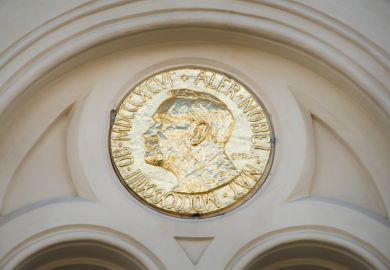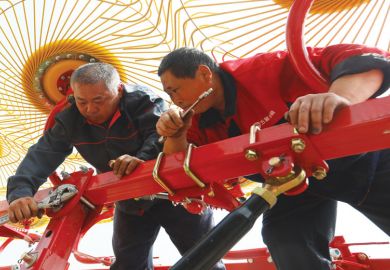Susan C. Lawrence's culmination of a decade's worth of methodical and prodigious research into the cultural milieu of 18th-century London "hospital medicine" has been well worth the wait. Quite distinct from traditional hospital histories that focus on bedside care and public health oriented design, Lawrence has elevated our understanding of the ways in which hospitals provided and continue to provide a network of relationships "among people, institutions, and knowledge" critical to the delivery of health care.
London was hardly the Mecca of medical education and reform when compared with Padua, Leiden, Paris or Edinburgh. But, as Lawrence deftly shows, the "long 18th century" allowed England's capital city to establish a venue appropriate for the creation and dissemination of medical knowledge. Namely, the city's hospitals or "Sacred Sanctuaries for the Sick". St Bartholomew's, St Thomas's, Guy's, the Westminster, St George's, the London, and the Middlesex provided for a new type of exchange.
The activities in and around these charitable institutions generated what Lawrence claims was central to modernising medicine: localisation. Specifically, hospital practice helped remould medical authority. Early in the 18th century, anyone could hang out his or her shingle and, through lack of adequate occupational policing, could become publicly recognised as an adequate healthcare provider. Later in the century, London's hospitals evolved into reputable institutions for "the production and legitimisation of both reliable doctors and good medical knowledge". Lawrence's book centres on this evolution of localising the medical authority, and it depicts this change in the placement of power as the lynchpin in moving from early modern to modern medical ideology and practice.
Despite the apparent incongruity of the title, Charitable Knowledge, the author clearly articulates how hospitals effectively served the display of benevolence as well as the production of knowledge. Physicians and surgeons working in hospitals could enhance the knowledge of their pupils, a general term encompassing the contemporarily recognised pupils, dressers and apprentices, somewhat akin to the "see one, do one, teach one" aphoristic style of teaching on today's wards. All the while, and often at low wages, these practitioners were easing the ills of hospital patients.
Such charitable action, so Lawrence claimed, was not unnoticed by the cultural elite. "Practising on the poor was all about practising among the rich ... in the ... fundamental sense that having a hospital post distinguished a man with prestige, learning, and expertise from the common run of ordinary practitioners". In other words, hospital men were recognised as gentlemen.
Following a detailed introduction, Lawrence devotes four chapters to explaining the evolution of medical education in London, the official licensing of practitioners, and the development of rigid hierarchies of teaching and practice on the hospital wards. Additionally, she elaborates on the ways in which private and public anatomy lectures offered by many hospital practitioners throughout the city, at times in venues outside the hospital, superimposed the instruction delivered in hospital. This discussion clarified her introductory remark that "hospitals are never self-confined worlds". Rather, communities of practitioners existed in Georgian London which, though they may have held separate hospital practices, had a common view of those they treated.
This view was apparent in the change of medical reporting. The once highly individualised, elaborate patient-oriented narratives became more objective, dry, disease-oriented reiterations of facts later in the century. Lawrence likens this new reporting to the experimental results contemporary gentlemen natural philosophers published in the Royal Society's Philosophical Transactions. Such similarity was hardly coincidental. Rather, this method of reporting was part of the hospital practitioners' display of the trappings of gentility, a subject which Lawrence discusses at great length in the second, more meaty portion of the book.
Throughout the first part of the book, "Education and Institutions", Lawrence presents a series of painstakingly compiled charts and graphs that synthesise a composite view of London hospital practice and practitioners for her cultural and medical historian readership. With pedantic detail, she intertwines the practitioners, their lectures and their pupils in all of these London institutions. Such a comprehensive picture is necessary for fully appreciating the second part of the book, "Community and Knowledge". In the latter, she convincingly analyses the processes by which hospitals played a pivotal role in formulating, questioning, verifying, and disseminating medical (and surgical) "know-how". On completion, I was left wanting to know more about the patients' views on their hospital experiences. Such insight would be particularly helpful to corroborate Lawrence's emphasis that the emerging hospital medicine of 1800 centered on the ways in which medical men "established control over their work and their patients".
Still, Lawrence has crafted a durable statement showing that although hospital patients were - and continue to be - exploited for "purposes other than care", the dissemination of "hospital medicine" has become culturally and occupationally accepted as crucial to the production of qualified physicians and surgeons.
Philip K. Wilson is assistant professor in the history of science, Truman State University, Kirksville, Missouri, United States.
Charitable Knowledge: Hospital Pupils and Practitioners in 18th-Century London
Author - Susan C. Lawrence
ISBN - 0 521 36355 1
Publisher - Cambridge University Press
Price - £45.00
Pages - 390



